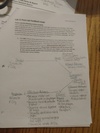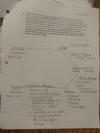Lab 11 Flashcards
(92 cards)
This system Serves as a major highway for transporting substances from one location to another in the body
Cardiovascular system.
What are the effectors for altering the flow of blood (3)
1) sinoatrial node conducting cells (heart rate)
2) left ventricle contractile cells ( to alter stroke volume)
3) smooth muscle cells of arterioles (adjusting distribution of blood in the body)
What effector alters heart rate
Conducting cells of the sinoatrial node
What effector alter stroke volume
Contractile cells of the left ventricle
What effector adjusts the distribution of blood in the body
Smooth muscles of the arterioles
This will restrict blood flow
Vasoconstriction
This will increase blood flow
Vasodilation
Force of contraction is called
Myocardial contractility
Norepinephrine has what effect on the arterioles (vasoconstriction or vasodilation)
Vasoconstriction
What effect does epinephrine have on arterials (vasoconstriction or vasodilation)
Vasodilation
Increased CO2, decreased O2, increased temperature, and decreased pH are local signals that lead to:
(Vasoconstriction or vasodilation)
Vasodilation
Respiration involves what three steps?
1) gas exchange at the cells
2) gas exchange at the lungs
3) ventilation
This step involves oxygen leaving and carbon dioxide entering the blood
Gas exchange at the cells
This step involves oxygen entering and carbon dioxide leaving the blood at the alveoli
Gas exchange at the lungs
The process of moving air into and out of the lungs
Ventilation
Gases whether a mixture or an individual gas will move down what?
Pressure gradients ( high to low )
This law states there is an inverse relationship between the pressure of gas and the volume of its container
Boyle’s law
Volume is increased and pressure is decreased what law are we referring to
Boyle’s law
The total pressure of a mixed gas is the sum of all of the partial pressures of the individual gases
(What law states)
Dalton’s law
Ventilation provides a clear example of which law?
Boyle’s or Dalton’s
Boyle’s law
When air moves out of the lungs where is pressure higher
Atmospheric or alveolar
Alveolar
What is the term that means oxygen required
Aerobic
What are the names of the aerobic pathways (2)
Electron transport system
Citric acid cycle
Where do the aerobic pathways take place in the cell
Mitochondria







